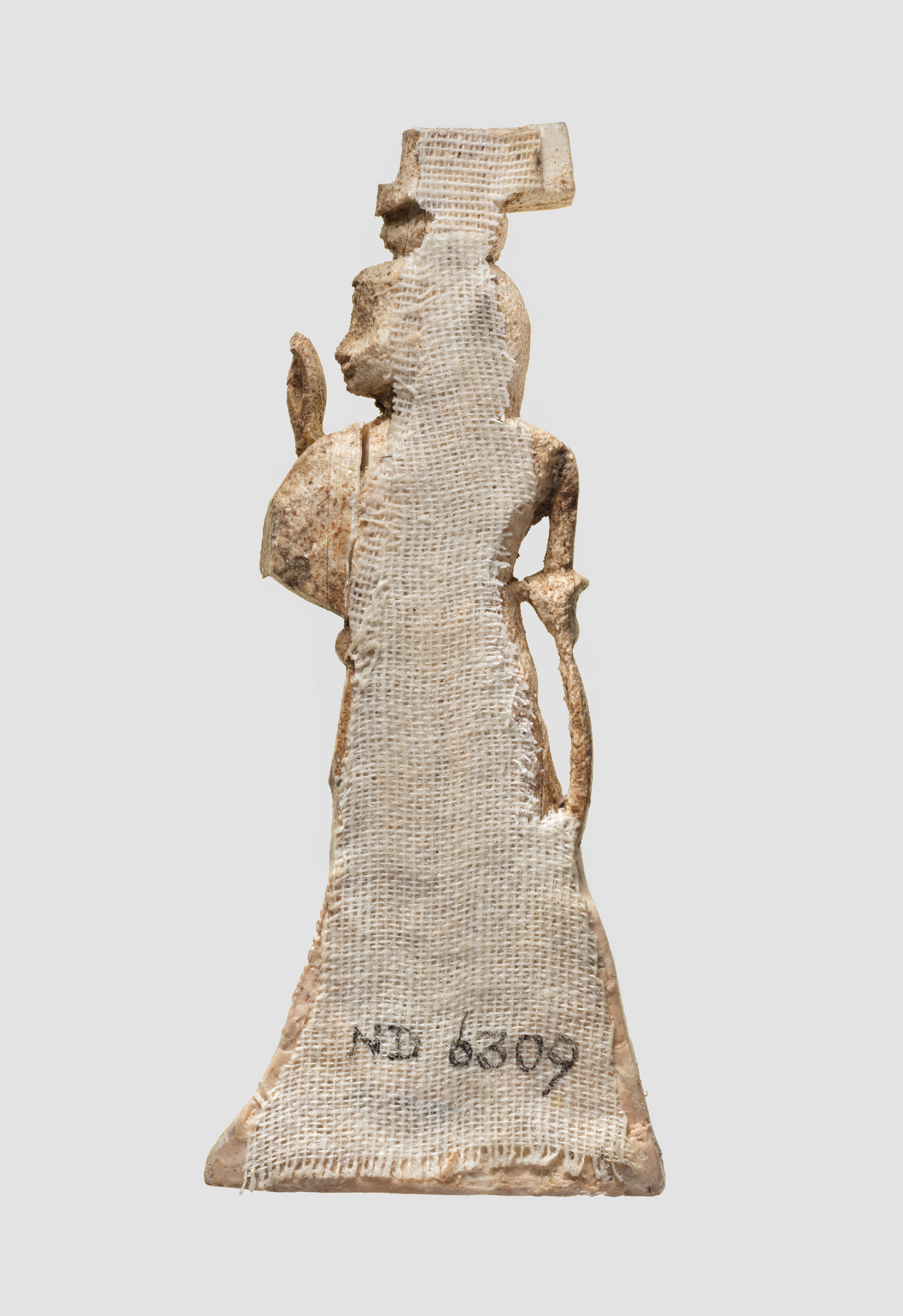Openwork furniture plaque with a male youth
Not on view
This openwork plaque depicts a clean-shaven, youthful male figure facing right. It was found at Fort Shalmaneser, a royal building at Nimrud that was probably used to store tribute and booty collected by the Assyrians while on military campaign. Certain Egyptian features, including the short, curly wig, fragmentary solar-disc crown, sleeved shawl, and fringed skirt that leaves the legs bare, are frequently found on Phoenician ivories. The figure raises his right arm with an open palm; only the upper left arm is preserved. Traces of gold foil are visible on the shawl sleeve above the belt. The wig, which also retains some of its original overlay of gold foil, was embellished with Egyptian blue, a vibrant artificially manufactured pigment. The belt and garment hem were also originally inlaid, and traces of red pigment survive in the loop of the belt. A tenon preserved above the thin strip of ivory that borders the plaque on the upper edge suggests that this piece was originally set into a frame, likely as part of a piece of furniture.
Built by the Assyrian king Ashurnasirpal II, the palaces and storerooms of Nimrud housed thousands of pieces of carved ivory. Most of the ivories served as furniture inlays or small precious objects such as boxes. While some of them were carved in the same style as the large Assyrian reliefs lining the walls of the Northwest Palace, the majority of the ivories display images and styles related to the arts of North Syria and the Phoenician city-states. Phoenician style ivories are distinguished by their use of imagery related to Egyptian art, such as sphinxes and figures wearing pharaonic crowns, and the use of elaborate carving techniques such as openwork and colored glass inlay. North Syrian style ivories tend to depict stockier figures in more dynamic compositions, carved as solid plaques with fewer added decorative elements. However, some pieces do not fit easily into any of these three styles. Most of the ivories were probably collected by the Assyrian kings as tribute from vassal states, and as booty from conquered enemies, while some may have been manufactured in workshops at Nimrud. The ivory tusks that provided the raw material for these objects were almost certainly from African elephants, imported from lands south of Egypt, although elephants did inhabit several river valleys in Syria until they were hunted to extinction by the end of the eighth century B.C.
Due to rights restrictions, this image cannot be enlarged, viewed at full screen, or downloaded.
This artwork is meant to be viewed from right to left. Scroll left to view more.



